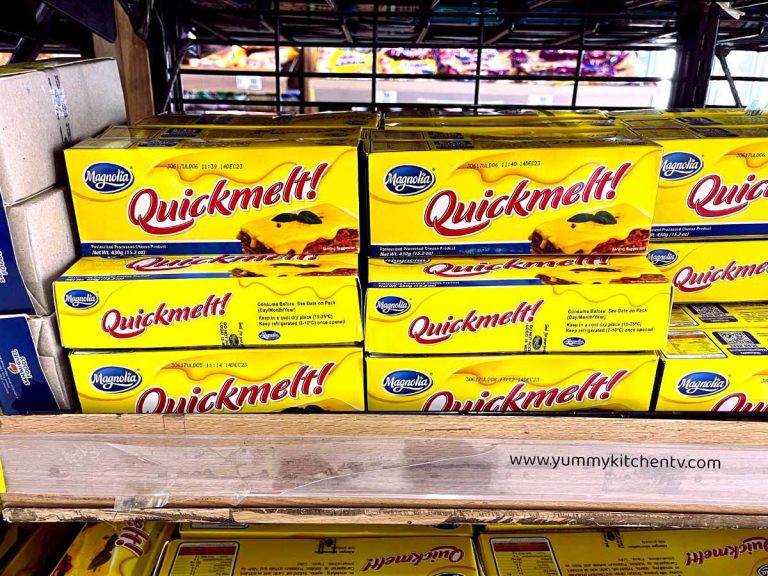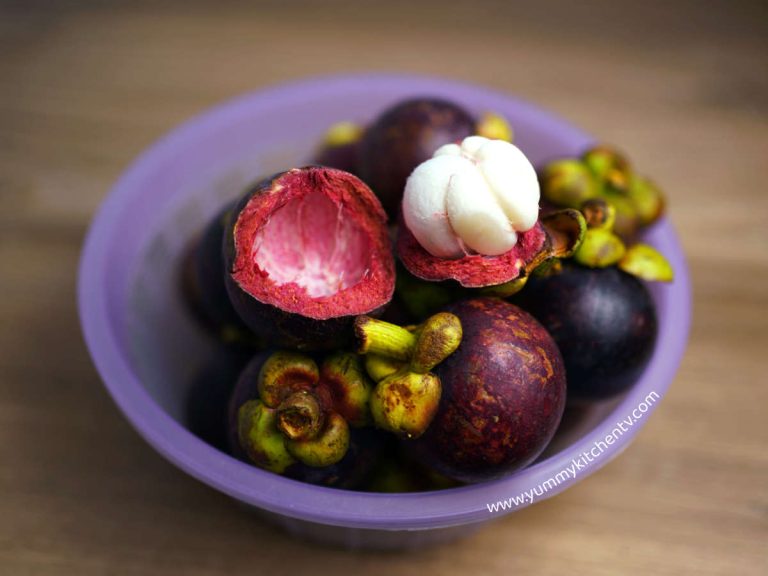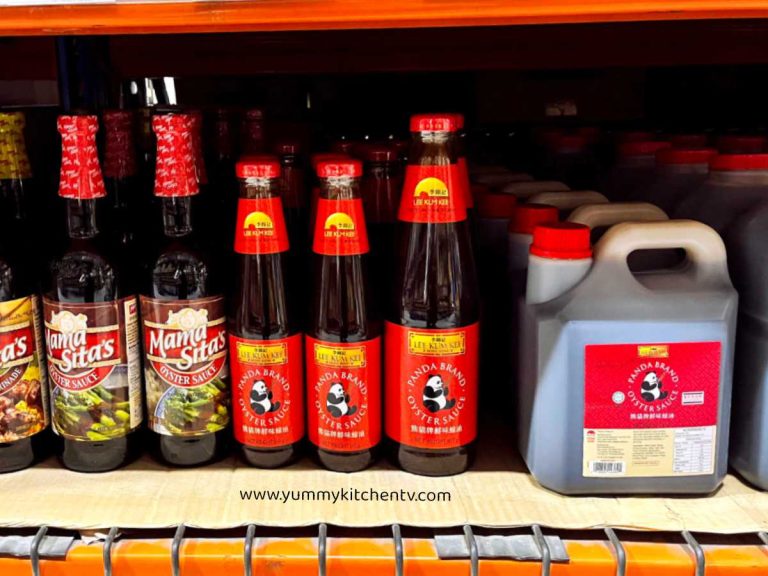Rambutan – An Exotically Sweet Superfruit
Rambutan (scientific name Nephelium lappaceum) is a distinct oval shaped fruit with a vibrant red or yellow soft hairy shell. Native to Malaysia and most of tropical Southeast Asia. It grows from a tropical tree under the Sapindaceae family (soapberry family), closely related to fruits such as the longan, lychee, quenepa, and pulasan. Appreciated all over the world for its exotic looks and sweet translucent juicy pulp that is rich in antioxidants, Vitamin C, and many more nutrients. These can be enjoyed as is, in sweet or savory salads, made into jam or jellies, mixed into desserts, and sometimes in curries. A perfect healthy treat for adventurous foodies.
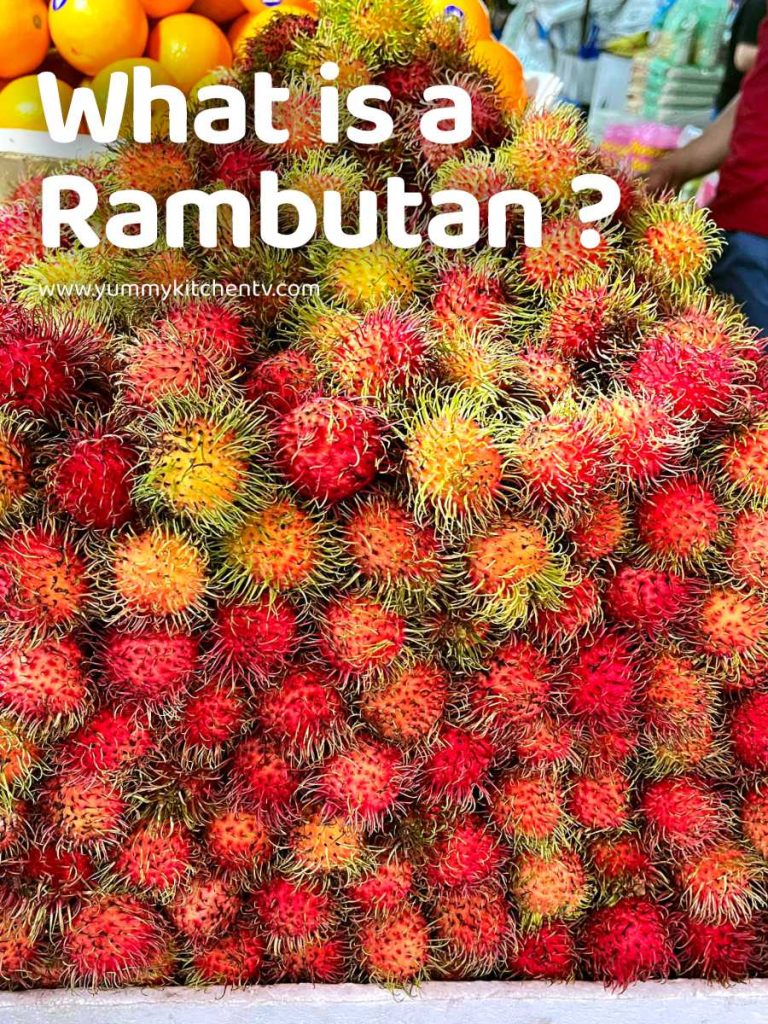
A short Introduction
The Rambutan, (rambutan pronunciation ‘ram-boo-tn’), came from the word ‘rambut’ in Malay meaning ‘hairy’ describing the outer skin of the fruit. Native and cultivated in places like Indonesia, Singapore, Thailand, Malaysia, Indonesia, Sri Lanka, Myanmar, and the Philippines. But from where it originated, as per written records shows that it was around the 14th century when Arab traders who played a big role in the Indian Ocean trade introduced the rambutan to East Africa. In the 19th century the Dutch introduced this red fruit to South America, and in 1912 it traveled from the Malay-Indonesia region to the Philippines. The distribution got limited around the 1950’s.
The rambutan trees can grow to a height of almost 80 feet, with small flowers and leaflet sets from 4 to 11. The fruit looks like a hairy version of the lychee. While they both have similar coloring, the lychee has a tough leather with a scale-like pattern texture, but the rambutan fruit is larger and has soft spines that make it look like it has thick red hair with yellow or green tips all around. How to eat the rambutan fruit? These are opened similarly to a lychee where it needs to be applied pressure on with one or two hands, making a slit and peeling it to reveal an edible white translucent flesh and a big seed in the middle. The seed is bitter when bitten onto, and is only consumed after being roasted.
There are many rambutan plant variations around the world that produce either an oval red to bright yellow colored fruit. What does rambutan taste like? Rambutan tastes like a grape with a bit of tartness. Which makes it great to eat as a snack, pureed to and made into jams, ice cream, sorbet, or added in smoothies for natural sweetness, in some cuisines these are added in curries and other savory dishes to balance the spiciness.
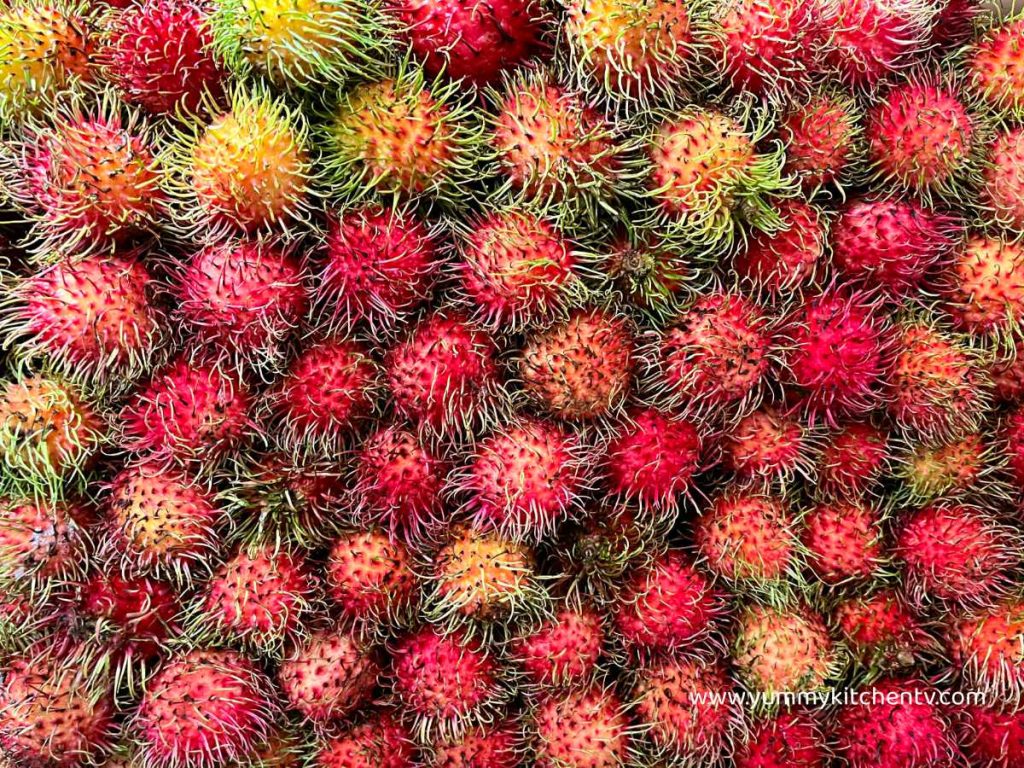
Rambutan Fruit Benefits
This energy boosting fruit is full of natural and healthy sugars. Making it an ideal snack for sportsmen, athletes, or foodies looking for something healthier. Rambutan calories count to 75 calories per serving of 100 grams of the flesh, making them a great easy snack. Here are some samples of rambutan benefits
- Provides the body with Antioxidants to protect the body from cell damage.
- Promotes a healthy digestive system. Like most fruits, it contains soluble fiber that speeds up bowel movements, and feeds beneficial bacteria to the intestines. This helps the body from constipation, ulcers, and internal disorders.
- Because it does have fiber which helps the stomach, it is also great for weight loss. Fiber rich foods keep the body fuller for longer.
- Rich in Vitamin C that not only helps with immunity but also increases blood cells that the body needs to fight off infections and bacteria.
- Packed with Potassium, has a higher percentage compared to some fruits and vegetables. This is needed to regulate blood pressure, prevent kidney stones and strokes.
- It is also rich in Zinc, copper, manganese which help protect against cold, keep a healthy metabolism, and help wounds heal faster.
* Can dogs eat rambutan? They are safe for pets to eat! Provided that they are ONLY GIVEN THE FLESH, do not give them the skin or seed as these can be poisonous to dogs.
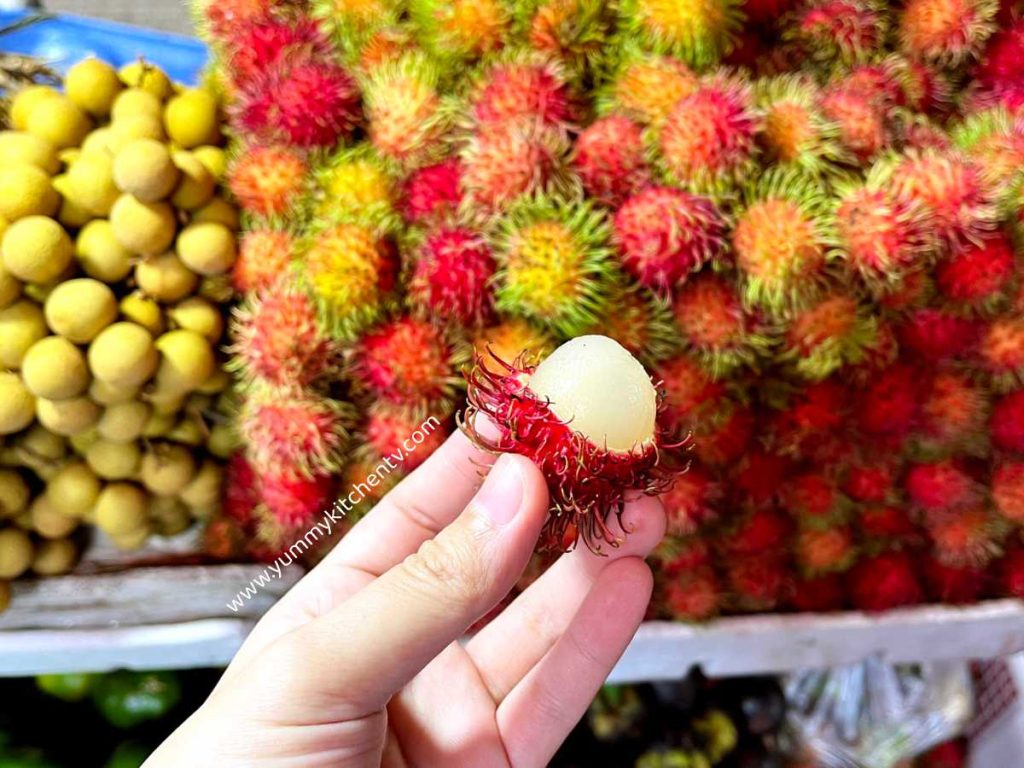
Questions:
- How do you eat rambutan? While it seems like a complicated fruit to eat here are steps on how to eat rambutan fruit:
- Hold the fruit between your thumb and the side of your pointer. You can also use both hands with each thumb and pointer on each end of the fruit.
- Give it a bit of pressure. Not too much to keep the juices from spilling out.
- Once you find a crack, peel the skin till only the flesh is left.
- Make another incision and peel the flesh away or remove the seed. You can also eat around the flesh, avoiding the seed. Some take the entire peeled fruit to the mouth, eating the flesh, avoiding crushing the seed (then spitting it out).
- Rambutan vs Lychee (lichi):
Is rambutan lychee some wonder? No, while they do look very similar except for one looking hairier than the other, here are more examples of both of the fruit’s differences:
- The biggest difference seen is the outer shell. Lychees are a bit rough with a scale-like pattern and bumps. While the Rambutans are red and covered with spines/hairs that have either a yellow or green tip.
- Lychees are smaller, almost similar to the size of a large grape or cherry. Whereas the other can grow to the size of a gold ball.
- Both flesh might look similar but lychees have a more juicy and crisp texture, while the rambutans taste and feel creamier.
- Rambutans taste sweeter and creamier, while Lychees are subtly sweet, are more aromatic, and has a floral taste.
Rambutan Variations in the Philippines
In the Philippines, the rambutan plants flower from late March to early May, bears fruits and is harvested around August to October. You can typically find them being sold alongside longan fruit, lychees. These fruits are transported to local markets and street stalls within 3 days of picking to keep its freshness. There are different cultivars introduced by the neighboring countries of Malaysia and Indonesia to the Philippines, these are the:
- Maharlika, the most popular variety, has a reddish-pink base with a graduation of pink to yellow spines/tips that are widely spaced.
- Seematjan, Similar in looks to the Maharlika but with longer spines, and egg shaped. The meat is half the weight of the whole fruit.
- Seenjonja, bright red and smaller than the Seematjan, have shorter spines, and the edible portion is less than half of the whole fruit.
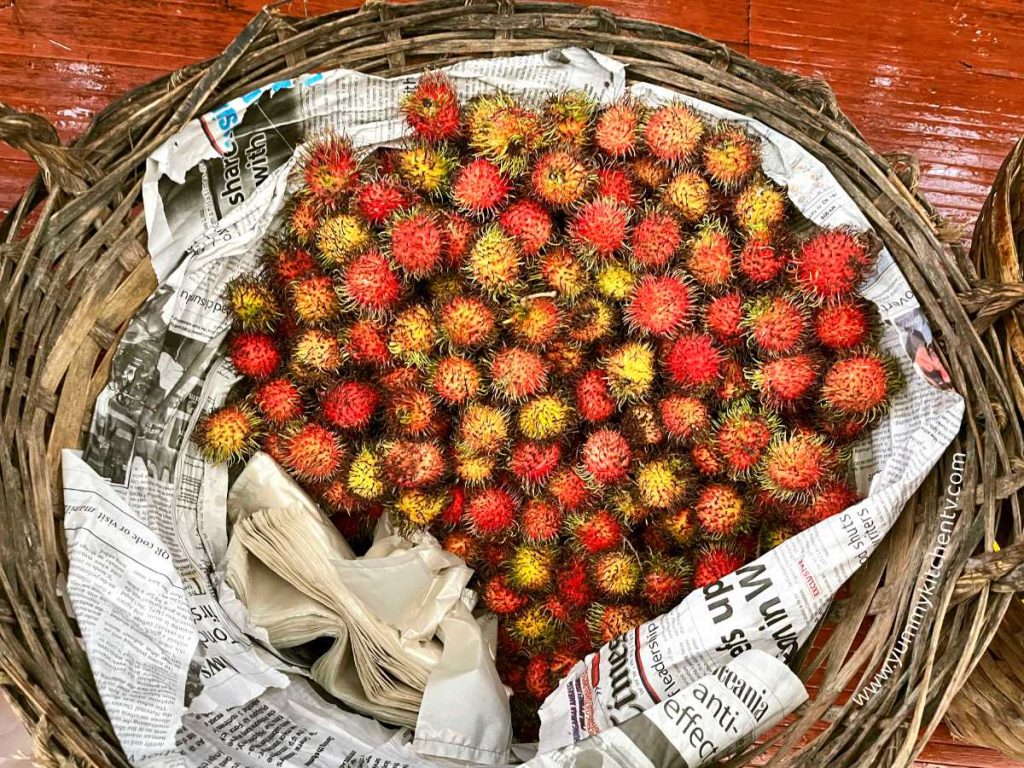
While this fruit might look a bit intimidating, you’ll be surprised at how sweet and juicy it is once you’ve given it a try!
##Rambutan #TropicalFruit #ExoticFruit #HealthyTreat #Superfruit #FruitLovers #FreshAndTasty #UniqueFlavors #TropicalDelight #HealthySnacking

